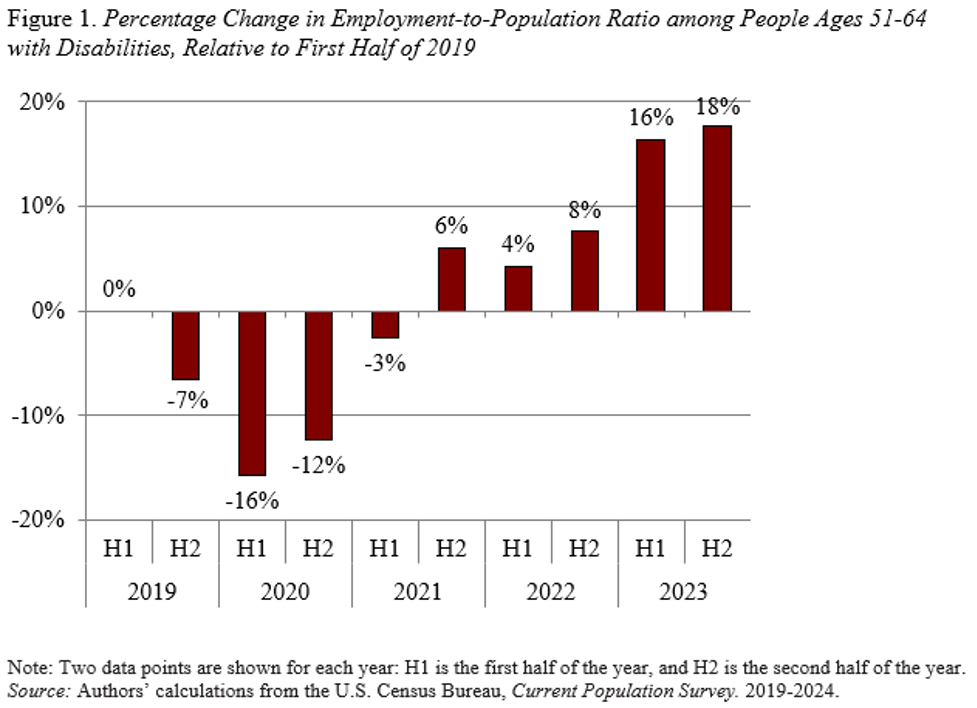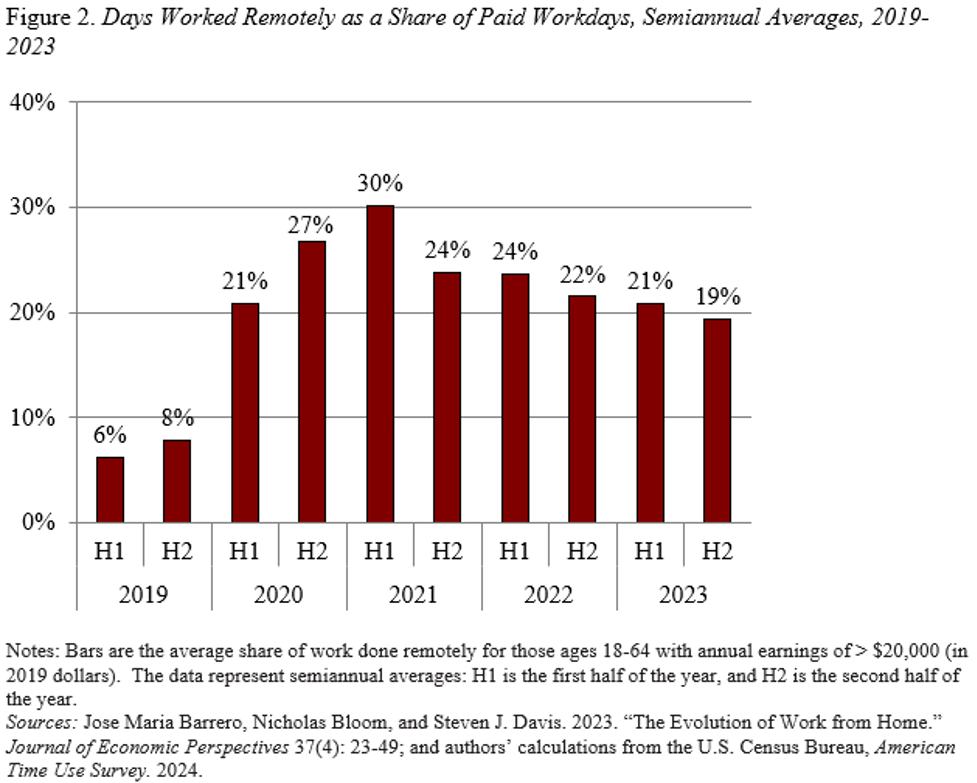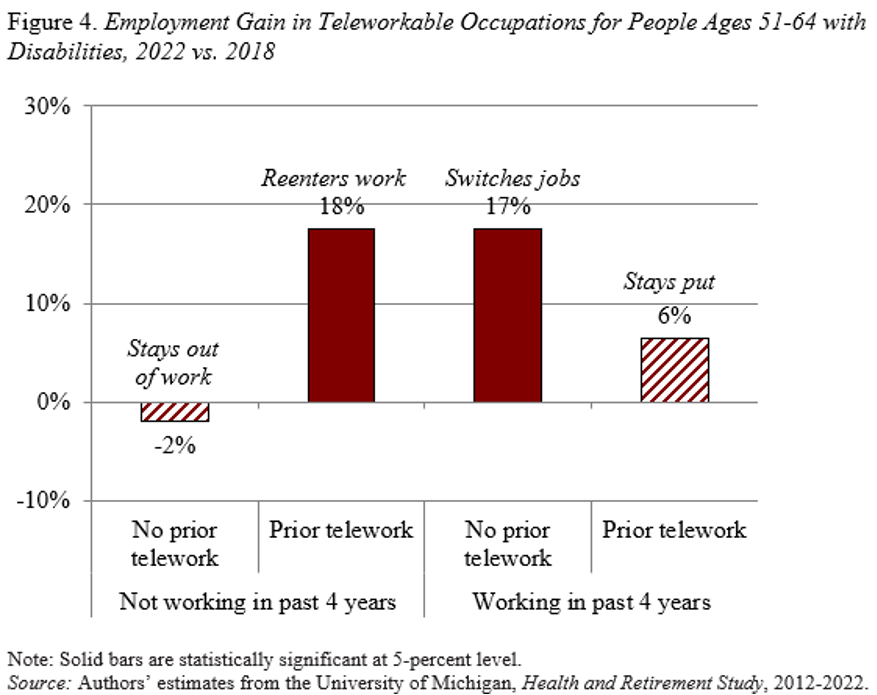Job prospects have improved for the reason that pandemic for these typically missed employees.
My colleagues simply accomplished an fascinating research exploring why the employment charge for older employees with disabilities surged after the pandemic (see Determine 1).

Particularly, they have been within the extent to which this surge could be attributed to the chance to work remotely, which stays means above pre-pandemic ranges (see Determine 2).

Answering the query is difficult barely by the truth that two different post-pandemic developments may be influencing employment. First, the next share of the working-age inhabitants now experiences having a incapacity, which signifies that the composition of individuals with disabilities might have shifted to these with increased work capability. This argument is much less related for older employees, nonetheless, for the reason that rise in incapacity is concentrated amongst youthful employees.
A second, extra common, issue is the bizarre tightness of the labor market in recent times, with the variety of job openings quickly outpacing the variety of unemployed job seekers. Because of this, extra – and higher-paying – job alternatives have emerged for employees who historically face obstacles within the labor market. Within the case of employees with disabilities, employers could also be extra prepared to supply lodging akin to extra versatile hours and extra frequent breaks.
The evaluation begins by merely breaking down the rise within the employment charge by whether or not the employee’s occupation is one the place work could be finished remotely – that’s, the occupation is “teleworkable.” The outcomes present that each one the rise within the employment-to-population ratio amongst older folks with disabilities between 2018 and 2022 occurred in teleworkable occupations; no progress occurred in non-teleworkable employment (see grey bars in Determine 3).
These outcomes maintain even after controlling for incapacity severity and labor market tightness (see crimson bars).

The authors went on to determine the kind of employees who gained from the supply of distant work. The employees have been grouped by two facets of their current work historical past. The primary is whether or not or not they have been employed within the final 4 years, and the second is whether or not or not they’d prior expertise in teleworkable jobs (see Determine 4).

To grasp the story, take every end in flip. The primary group – those that had not labored previously 4 years and had no expertise in teleworkable jobs – noticed no enchancment: they stayed out of labor. In distinction, the second group – who did have expertise in teleworkable jobs – noticed a big improve in employment, indicating that they have been higher ready to reenter work as distant jobs surged. The third group is probably most fascinating. Employees on this group had been employed just lately and, regardless of their lack of familiarity with telework, have been in a position to transfer into these jobs quite than exiting the labor power due to their incapacity. Lastly, the fourth group – just lately working in teleworkable jobs – noticed much less profit from the shift to distant work, maybe as a result of they’d already acquired employer lodging previous to the pandemic, together with the power to telework.
Whereas the outcomes are persuasive, the extent to which these dynamics will persist over the long term stays an open query. The provision of distant work might decline because the labor market eases again towards extra regular circumstances. And, the extent to which older employees with disabilities want or wish to work may additionally decline because the influence of surprising pandemic-era circumstances – together with the non permanent closure of Social Safety area workplaces – subsides. We’ll see.

